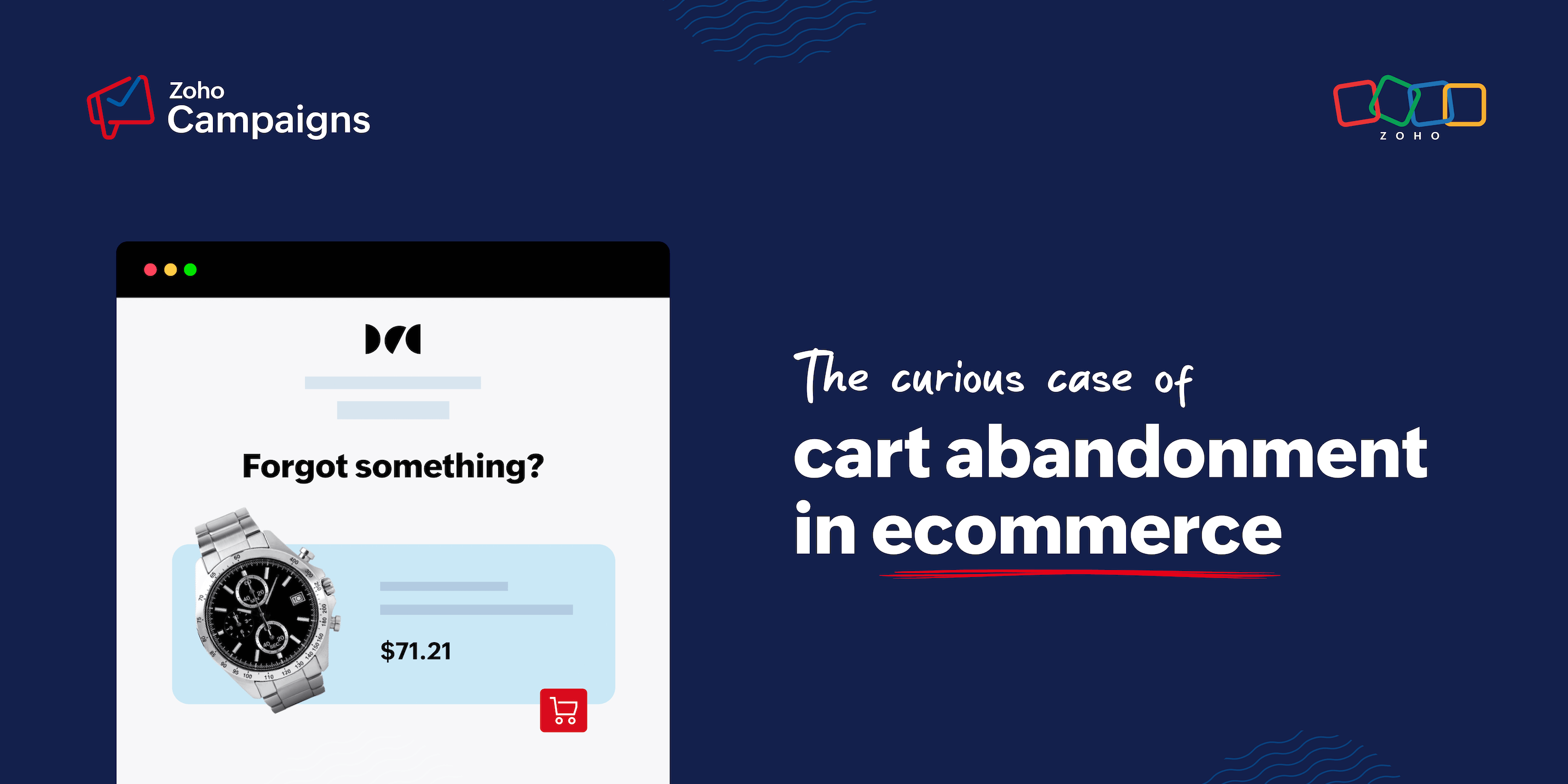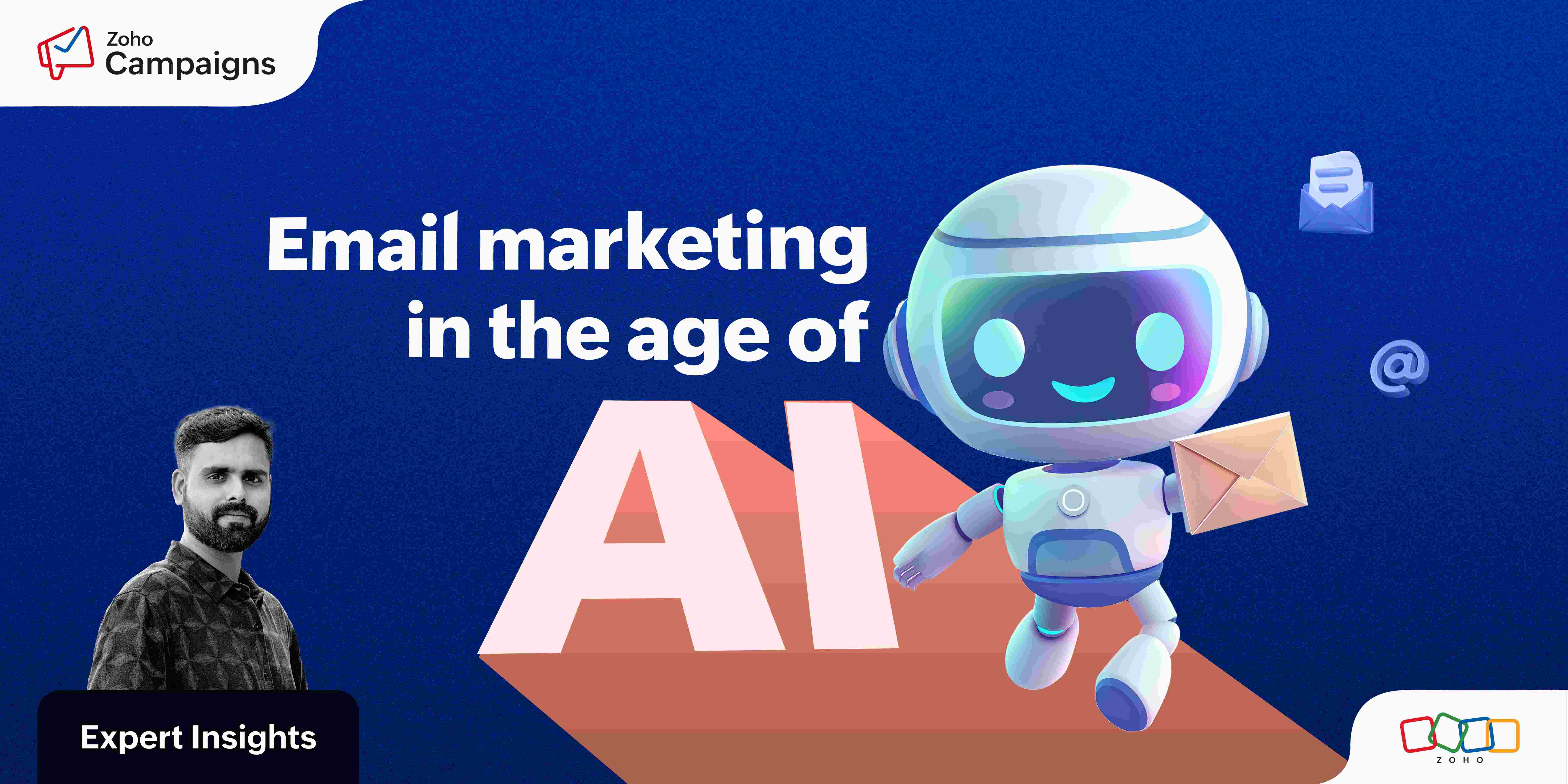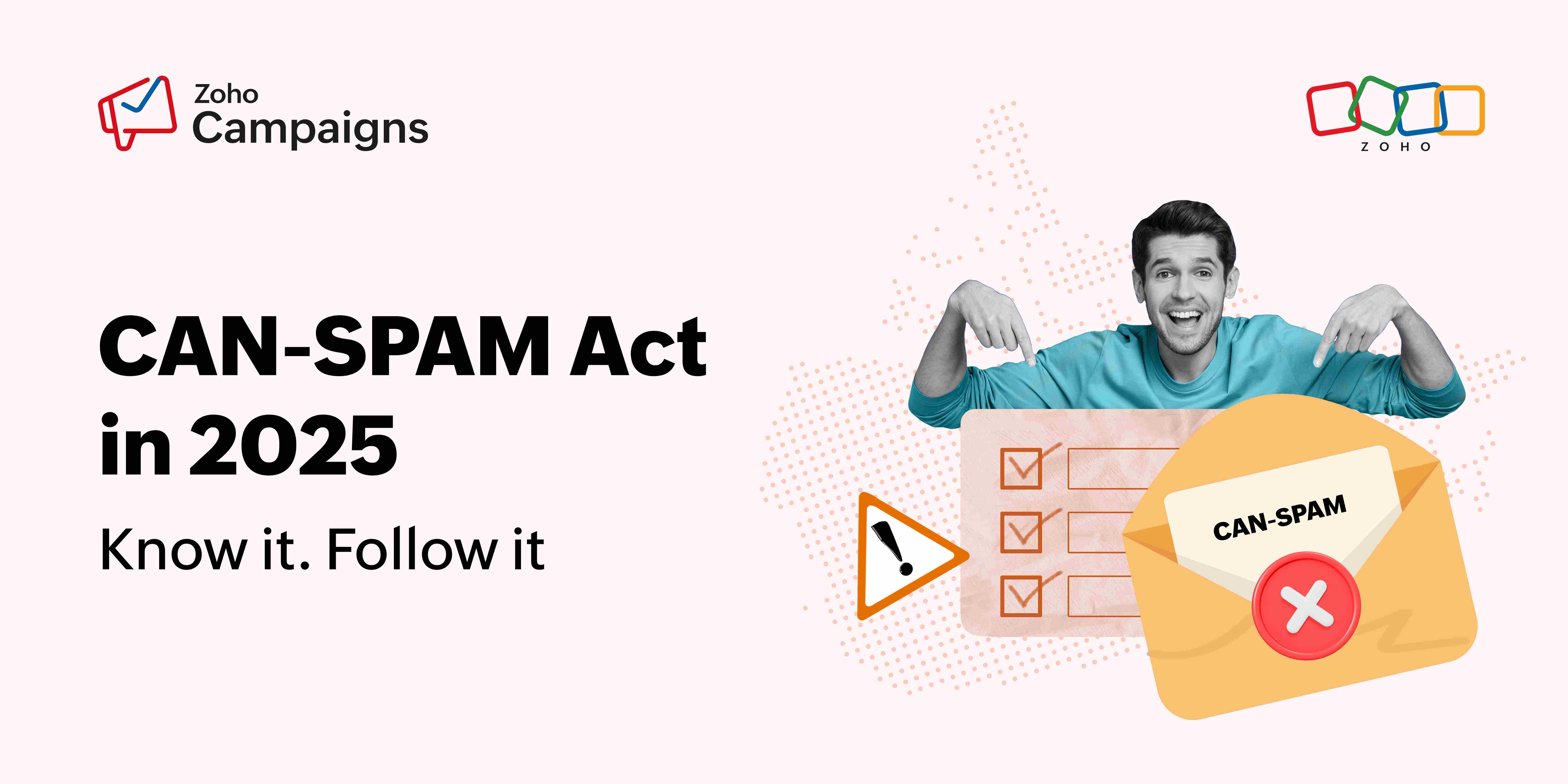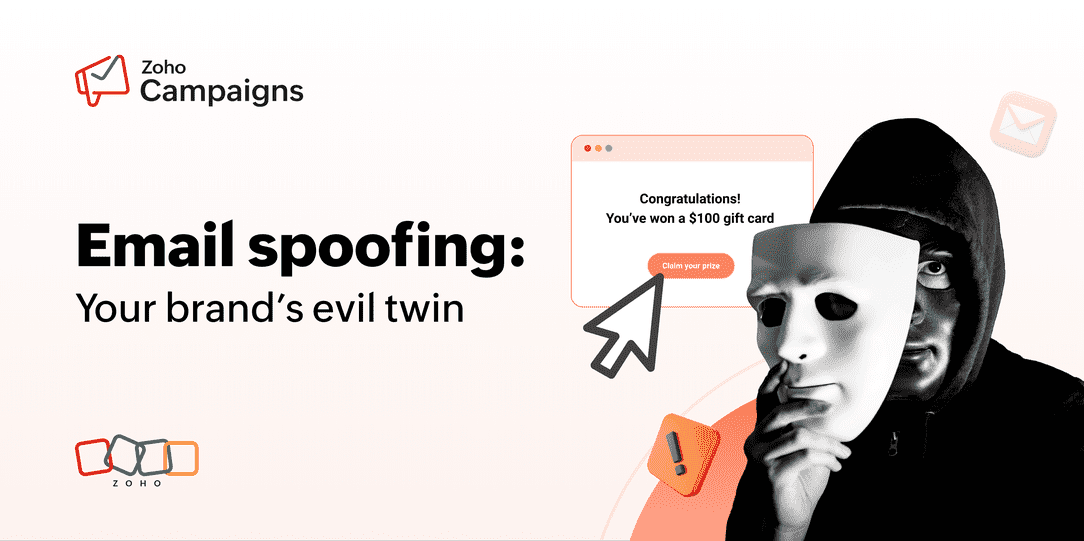- HOME
- Email Marketing
- Recovery strategies for ecommerce shopping cart abandonment
Recovery strategies for ecommerce shopping cart abandonment
- Last Updated : April 2, 2024
- 732 Views
- 8 Min Read

When it comes to online shopping, the classic saying holds true: "You can lead a horse to water, but you can't make it drink." Similarly, just because you can make your customers like your product and add it to their cart doesn't mean they'll actually hit that "buy" button.
Let's figure out how to nudge them into buying.
First, what is an abandoned cart?
You painstakingly create a brand with great products. You hire excellent writers and marketers to craft and run compelling ads. Your target audience visits your website, adds a product to their cart, and then... crickets! They go away without making the purchase.
This is called shopping cart abandonment, and you're not the only ecommerce store it happens to. Studies report that up to 70.19% of customers abandon their shopping carts from ecommerce sites.
In this blog, we'll dive into why shopping cart abandonment happens, discuss solutions for ecommerce cart abandonment, and give some specific examples of emails you can send to recover abandoned shopping carts.
Why do shopping carts get abandoned?
Before we solve the problem of shopping cart abandonment, let's investigate and understand why it happens.
Shopping carts get abandoned for a variety of reasons, including but not limited to:
Additional costs: The customer might have started the purchase expecting to pay a certain amount at checkout. Additional charges—such as for shipping, taxes, packaging, and transactional fees—tend to add up quickly, making the customer feel that the extra cost isn't worth it.
Long delivery timelines: We're in the era of quick-commerce, where customers sometimes expect deliveries within an hour. Given such expectations, if the delivery timelines on your checkout page seem too long, the customer might lose interest in purchasing.
Lack of testimonials: When customers choose to buy online, they're essentially taking a leap of faith. But if the company doesn't seem to have very many reviews, ratings, or testimonials, this lack of social proof can be a big deterrent for purchasers.
Device/internet troubles: Internet outages occur even in the most developed countries due to various reasons. Similarly, laptops and mobile devices can shut down or crash at any time. Such problems could also prevent your customer from finalizing their purchase.
Distractions or disruptions: The customer might have wanted to check out but forgot, got distracted by a call or an email, or simply moved on to another task.
Untrustworthy website: Websites can seem sketchy to customers even when they seemingly have glowing reviews. From a generic looking website with no character or contact information to a seemingly insecure payment option, multiple missteps from your end could make the customer ultimately decide against buying. Having no contact information on the website—as well as no mention of a return or refund policy—is a turn-off for many would-be customers.
Comparison: Comparison really can rob ecommerce stores of their joy. If your customers check out competitors and find identical products at a lower price, they might decide not to purchase from you.
Cluttered or slow pages: When you have multiple products catering to different segments and the customers can't find what they came looking for, that's going to be a huge deterrent. Even if your customer somehow manages to find what they want and add it to your cart, there's no guarantee they'll continue with the purchase if the subsequent pages load at a sluggish pace.
Complicated checkout: Are you making your customers jump through hoops before they can purchase a simple item? If checkout consists of multiple pages, requires more information than is necessary, and has too many steps, you're definitely losing some customers there.
- Delay, not denial: Sometimes, a customer might decide to delay the purchase for a few days to a few months, depending on how urgently they need the product. This doesn't necessarily mean they'll come back and buy, or that they'll buy from you—but there's still hope left if you make the move at the right time.
Solutions for shopping cart abandonment
If your carts are often abandoned, start by understanding where your store lags against your competitors. Fixing these issues will reduce cart abandonment and boost checkout rates.
Make it impossible to abandon carts
While there are many tips for bringing back customers who abandoned their carts, you can't make them buy if the problem is with your site. So the key is to create an experience so wonderful that your customers can't leave without making a purchase—which can't happen until you do a deep dive into your ecommerce site, do some introspection, and fix the possible contributors to cart abandonment.
Optimize your website and make it easy for customers to find products they want.
Reduce page load times and simplify the checkout process.
Display trust badges and use secure payment gateways.
Offer options for cash on delivery (COD) until you can build up a reputation.
Show costs upfront as much as possible and don't surprise customers with additional charges at checkout.
Use exit intent pop-ups with discount codes to make checkout more compelling.
Give discount codes and offer free shipping to sweeten the deal.
Increase reliability by providing contact information and a return or refund policy.
Have 24/7 customer support available through chat, email, and phone to answer any questions customers may have before and after purchase.
- Conduct extensive A/B tests on new webpages, descriptions, and designs to validate what resonates better with your customers.
Reel customers back in through social media
Social media can be a great tool not just for bringing new customers to your website, but also for bringing back customers who abandoned their shopping carts. Use re-targeting ads to remind and nudge customers into coming back.
User generated content, such as product photos and reviews, is some of the best social proof your brand can have. When people see their friends, family, and favorite influencers raving about your products on their social pages, even those whodoubted you will come back to finish the purchase.
Increase shopping cart recovery through emails
With its hyper-targeting capabilities, email marketing is one of the best ways to recover abandoned carts. You can quickly send automated yet personalized emails reminding customers that they have unfinished business with you. Well-crafted emails with bold call-to-action (CTA) buttons can help increase cart recovery numbers to a great extent.
Abandoned cart email examples
When companies want to do abandoned cart emails, they often stick to the classic "You left something in your cart, now please come back" type of email. While they're better than sending no emails, there are a lot more creative ways to send abandoned cart recovery emails.
Sweeten the deal
This email is minimalistic but gets the job done. It shows the products the customer left in the cart and offers an exclusive 20% discount upon checkout using a code. The CTA button stands out in a different color, making it easier to spot and click.

Validate customers' feelings
Blue Tribe, a plant-based meat brand, was a new brand in the market who understood that their potential customers were right to be apprehensive about a new concept in their country.
So Blue Tribe sent abandoned cart recovery emails acknowledging that customers needed time to warm up to the idea, and offered a discount code to help customers get started. We think this is a great way to get customers to try your products.

Create a sense of urgency
This email conveys that the item in the customer's cart is running low on stock. If the customer was really planning on buying it and decided to delay it for some reason, such an email might push them towards buying it. The image used in the email also conveys the same emotion, making the design quite effective.

Source: Really Good Emails
Be a little whimsical
This email from an artist's shop shines thanks to its clever copy alone. There's no discount code, promise of free shipping, or even a sense of urgency, but it's well-written and serves as a quick reminder.

Eliminate struggles
This email example, while intended as an abandoned cart recovery mail, doesn't start selling immediately. The brand understands that the customer might have had second thoughts and offers to answer their questions. If the customer really did have some questions about the product, this is a great way to break the ice.
Only later does the email get back to the subject of the abandoned cart and lets them purchase the product still in the cart. As a bonus, it also shows similar products to nudge the customer to come back and browse more. 
Source: Really Good Emails
Make it light on the wallet
When it comes to expensive purchases, customers are often hesitant—for a variety of possible reasons, such as not having all the money at the moment or wanting to make the purchase in person to get a reliable product. So when you offer easy payment plans with product warranties and guaranteed quality assurance, it makes customers more willing to purchase from your site.
This email, which offers a pay later plan for an expensive instrument, is a good example of this type of cart recovery emails.
Source: Really Good Emails
Swoop in with the right deal
Sometimes, cart recovery doesn't even have to be about cart recovery. You know what popular products your customers add to their carts but don't buy. So if many customers are looking at the same product but not buying it, it's time to make it the deal of the week and let your customers know.

Tips for sending high-converting abandoned cart recovery emails
Social proof is a gold mine
It's difficult to overstate the importance of ratings, reviews, photos, and testimonials from reliable sources when you're trying to recover customers. If a customer abandoned their cart because they were unsure about your brand, what better way is there to get them back than to show that some of their most beloved celebrities—or even just regular good folks like themselves—love your products?
You can also leverage user-generated content—like a Twitter thread or Instagram post appreciating your product's quality—and link to them in your email to win your customer back.Attractive deals, irresistible steals!
Offering exclusive deals, discount codes, reward points, and other incentives often encourages customers to come back and finish their purchase. You also get bonus points if you don't make them go through the hassle of adding products to the cart again and instead take them to the checkout page directly from the email.Classic reminder with a twist
A classic reminder email is nothing new, and we all have many of them in our inboxes. But with great copy and design, you can elevate the same reminder email so that it makes the purchase irresistible. Catchy and personalized subject lines can improve cart recovery rates substantially.- Ain't nothing like FOMO
Statements like "We're running out", "Only one left," and "Offer only today" can generate a fear of missing out (FOMO). If a customer was seriously considering purchasing but delayed after adding products to their cart, this kind of email is sure to push them towards the finish line—i.e. checkout. Multiple channels, all at once
In addition to emails, use channels like app notifications, push notifications, and SMS messages to remind customers to come back and reclaim their abandoned carts. Doing so means that even if your customers miss acommunication through one channel, you can probably reach them through another. But the key is to balance the number and frequency of multi-channel communications.Mate, can you automate?
One of the most important pieces of the abandoned cart email puzzle is automation. When you have an email marketing automation tool, you can create a cart recovery sequence, design the emails, connect them to your ecommerce store's POS system, and let it run. You can even create multiple audience segments, trigger different sets of emails, and move them through different contact lists in your CRM with the power of automation.
Want to lower your cart abandonment rates using email automation?
Get started with Zoho Campaigns!
 Vidhya Vijayaraghavan
Vidhya VijayaraghavanHi! I'm Vidhya, a storyteller and problem solver. I wholeheartedly believe that B2B content doesn't have to be boring.
When not writing or having a writer's block, you can catch me reading, puzzling, or volunteering.
I'm game for a conversation about anything, especially B2B SaaS marketing (and cats too!).



